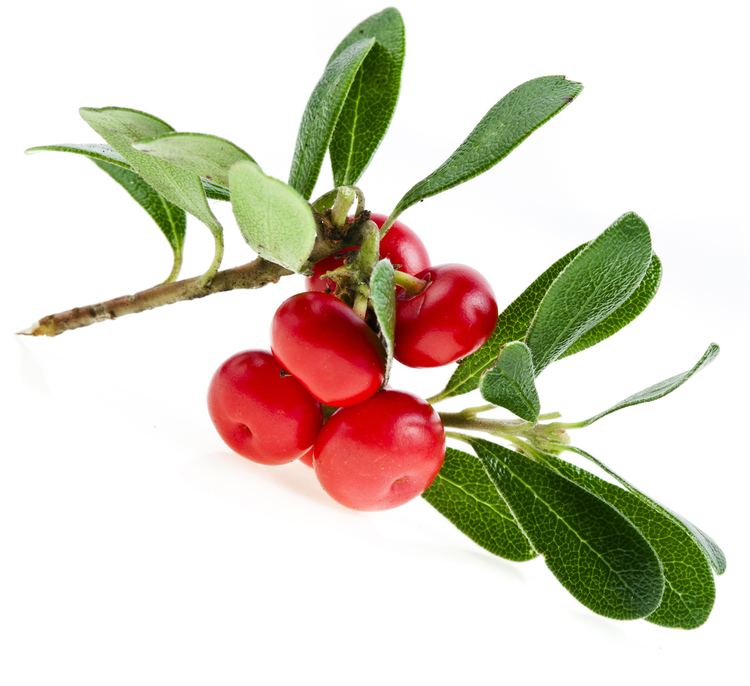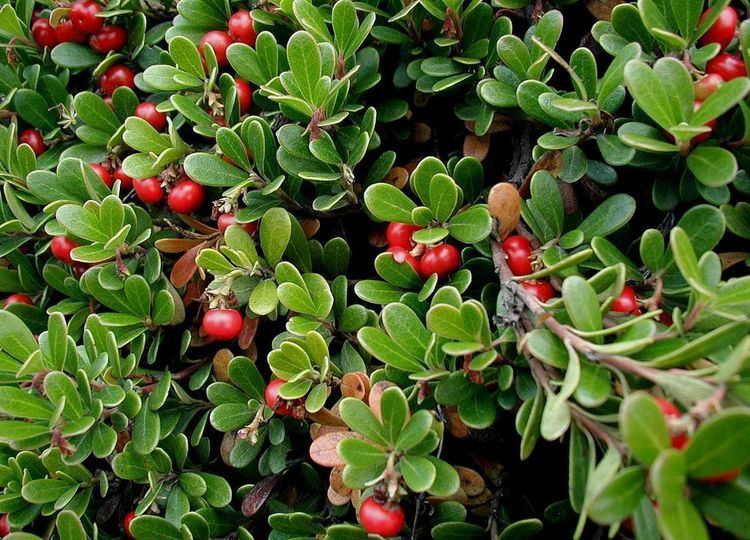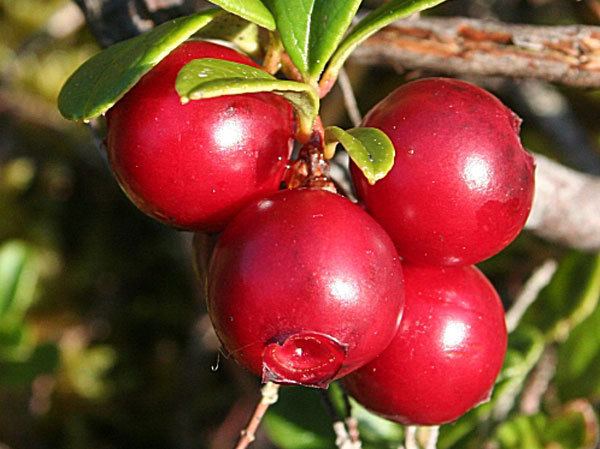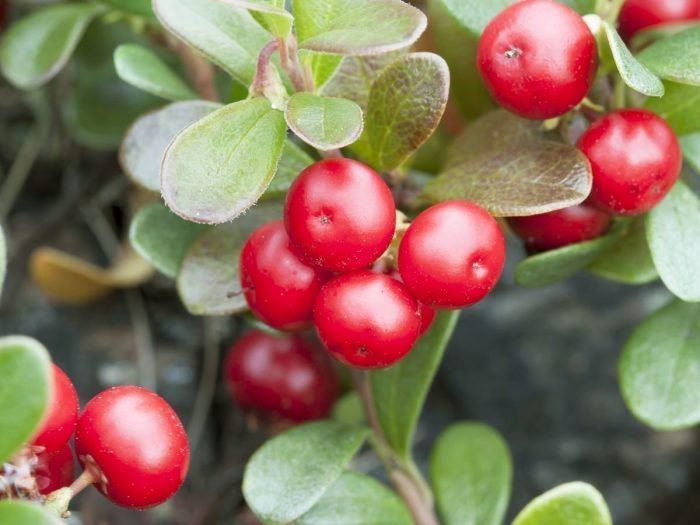 | ||
Representative species Bearberry, Arctostaphylos alpina, Arctostaphylos rubra | ||
Health benefits of bearberry
Bearberries are three species of dwarf shrubs in the genus Arctostaphylos. Unlike the other species of Arctostaphylos (see manzanita), they are adapted to Arctic and Subarctic climates, and have a circumpolar distribution in northern North America, Asia and Europe, one with a small highly disjunctive population in Central America.
Contents
- Health benefits of bearberry
- Bearberry arctostaphylos uva ursi seeds ground cover seeds on www myseeds co
- Species
- Phytochemicals and folk medicine
- History and folklore
- References

Bearberry arctostaphylos uva ursi seeds ground cover seeds on www myseeds co
Species

The name "bearberry" for the plant derives from the edible fruit which is a favorite food of bears. The fruit, also called bearberries, are edible and are sometimes gathered as food for humans. The leaves of the plant are used in herbal medicine.


Other recorded old English common names include arberry, bear's grape, crowberry, foxberry, hog cranberry, kinnikinnick, mealberry, mountain box, mountain cranberry, mountain tobacco, sandberry, upland cranberry, and uva-ursi.
Phytochemicals and folk medicine
The plant contains diverse phytochemicals, including ursolic acid, tannic acid, gallic acid, some essential oils and resin, hydroquinones (mainly arbutin, up to 17%), tannins (up to 15%), phenolic glycosides and flavonoids.
The leaves are picked any time during the summer and dried for use in infusions, liquid extracts, medicinal tea bags and tablets for folk medicine uses.
Bearberry appears to be relatively safe, although large doses may cause nausea, vomiting, fever, chills, back pain and tinnitus. It should not be used during pregnancy, breast feeding, or in children or patients with kidney disease.
The efficacy and safety of bearberry treatment in humans remains unproven, despite long-term use in folk medicine. Although human pilot studies exist, no clinical trials have been completed and consequently there are no conclusions about the safety or efficacy of using bearberry to treat any disease.
History and folklore
Bearberry was first documented in The Physicians of Myddfai, a 13th-century Welsh herbal. It was also described by Clusius in 1601, and recommended for medicinal use in 1763 by Gerhard and others. Often called uva-ursi, from the Latin uva, "grape, berry of the vine", ursi, "bear", i.e. "bear's grape". It first appeared in the London Pharmacopoeia in 1788.
In Strathnairn, Scotland there is a hill, known as Brin Mains, but which is known in Scottish Gaelic as "Cnoc nan Cnàimhseag" which means "The hill of the bearberries".
Folk tales suggest Marco Polo thought the Chinese were using it as a diuretic. Bearberry leaves are used medicinally in parts of Europe, and are officially classified as a phytomedicine. Native Americans use bearberry leaves with tobacco and other herbs in religious ceremonies, both as a smudge (type of incense) or smoked in a sacred pipe carrying the smoker's prayers to the Great Spirit. When mixed with tobacco or other herbs, it is referred to as kinnikinnick, from an Algonquian (probably Delaware) word for "mixture". Among the ingredients in kinnikinnick were non-poisonous sumac leaves, and the inner bark of certain bushes such as red osier dogwood (silky cornell), chokecherry, and alder, to improve the taste of the bearberry leaf.
